Top 10 most beautiful colorful neighborhoods in the world
From Italy to Iceland, through Argentina and Mexico, the cities of the world are full of multicolored facades. Red, blue, green, yellow, pink ... Discover the most beautiful neighborhoods on the planet!
1-Burano, Venise " Italy"
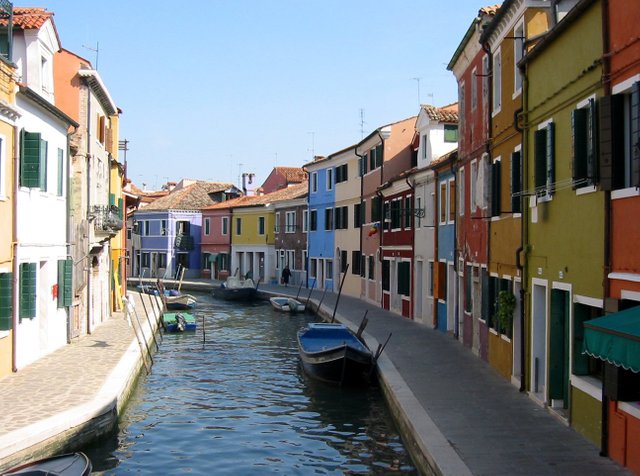
island of Burano and its multicolored houses in Venice.Burano multicolored - Enlarge, the island of lace is a small multicolored jewel.It is a miniature Venice, with its campanile leaning, its canals and bridges.
Just 40 minutes from the center of Venice, the Burano district is known for its colorful houses. The repainting of each house is regulated by the government, which delivers for each dwelling a palette of specific colors.
Venice is reproduced in a reduced model. The houses are on average one to two stories high and the population of Burano, Buranelli, is five thousand.
It is an island so special, with fishermen on one side and lacemakers on the other. Big hands and muscles against tapered and agile fingers.
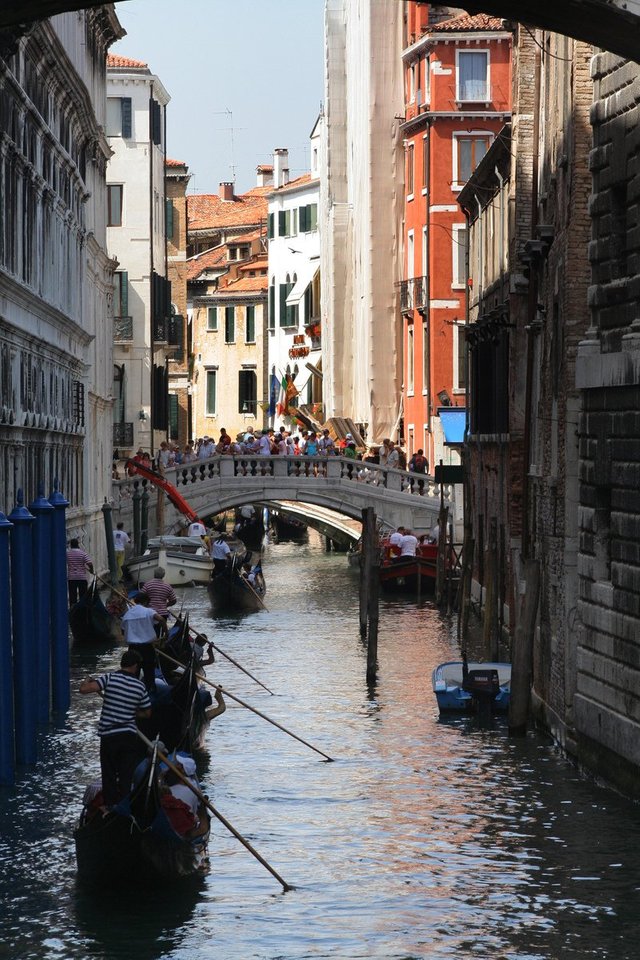
-Venice in 4K

2- Little Venice, Colmar "France"
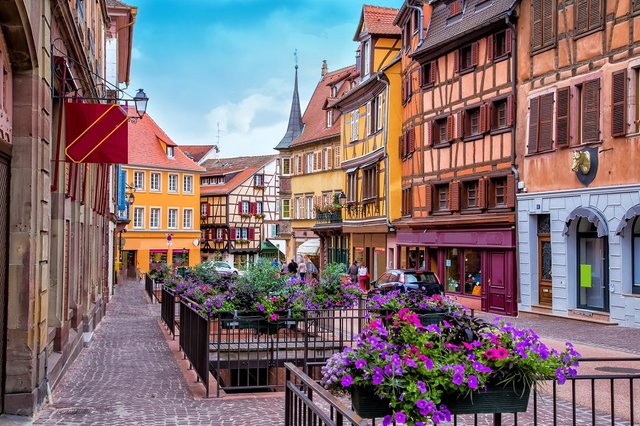
Colmar is located in the center of Alsace, in the department of Haut-Rhin. The location of the city, at the foot of the Vosges and its special climate (Colmar is one of the driest towns in France) earned him the nickname "capital of Alsace wines".
Little Venice is the warmest and most romantic district of Colmar. A city of culture, art and history, a must-see stop, Colmar attracts nearly 3.5 million tourists from all over the world, coming mainly from Europe, America and Japan, which come to see half-timbered houses of the Middle Ages, its canals, the picturesque district of Little Venice and its museums.
It is the Lauch River that runs through the southeastern part of the city. This district owes its name to the particular alignment of houses along this stream. This river, which flows into the River Ill, was used especially for the navigation of market gardeners using flat-bottomed boats.
Listed in 1984 "City flower 4 flowers", Colmar is also the birthplace of Bartholdi, the sculptor of the world's most famous work of art, the Statue of Liberty, given as a gift in New York ...

Colmar, France in 4K

3-Downtown, St. John's, Newfoundland" Canada"
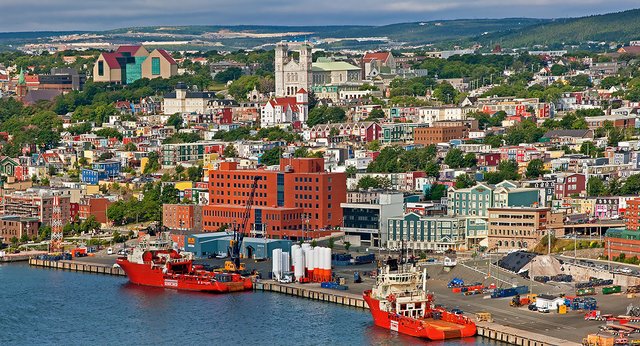
The capital of Newfoundland and Labrador, Saint John's is the oldest English-speaking city in North America. Located at the eastern end of the island, in a sumptuous natural environment, this maritime city stands out for its quiet life, colorful wood-paneled architecture and a bird's eye view of the Bay of Fundy. A little gem that deserves ...
Saint John's is a small capital, like most of its sisters, which is home to the majority of Newfoundland and Labrador's population. Far from everything, it is not easily accessible and yet worth a look for its unique maritime and architectural heritage, between the rows of colorful houses that line the steep streets of the city and the industrial port on a human scale with its monumental fishing boats! It has a curiously exotic appearance, an air of the end of the world.
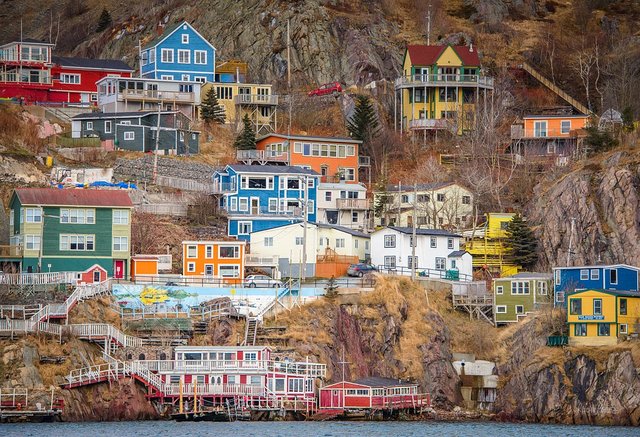
St. John's, Newfoundland - Canada HD Travel Channel

4-Pelourinho, Salvador da Bahia"Brazil"
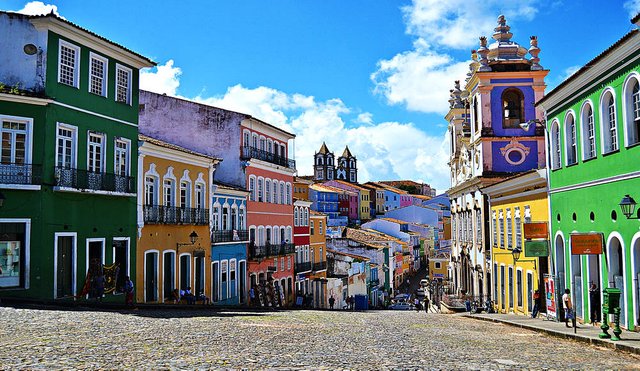
Salvador de Bahia is a mesmerizing city. It's the colors and atmosphere of mixed Brazil. Afro-Brazilian descendants of slaves, and their artistic culture give Salvador its particular tone. The historic heart of the city, the Pelourinho, perched on a natural promontory is classified World Cultural Heritage of Unesco. A fully paved neighborhood, old colorful houses, street vendors and artists ...
Salvador was the capital of Brazil for two centuries from the Renaissance, and the influence that the city had at that time is still visible in the historic center of Salvador de Bahia.

The Pelourinho, a Unesco World Heritage Site, is an open-air museum, which can be visited on foot by observing the colonial Baroque architecture whose colorful facades of buildings have made the city famous.
The Salvador Carnival attracts more than 2 million visitors every year and is one of the most beautiful carnivals in Brazil, if not the best. This carnival is a reflection of the local nightlife, always lively and very happy.
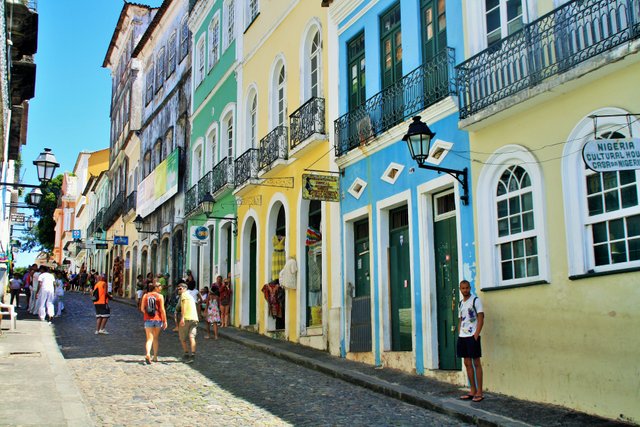
BRASIL / SALVADOR DE BAHÍA EN 4K / 2016

5-Notting Hill, London" United Kingdom"
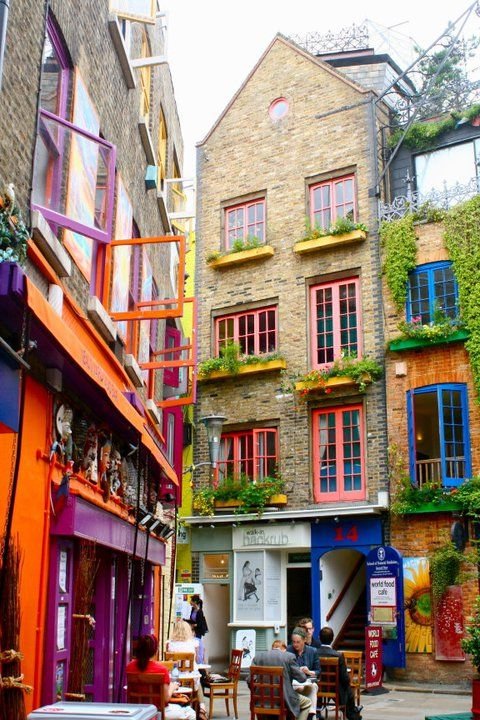
Notting Hill is a district in West London known for its carnival, market and Victorian homes. Hype district, however, has managed to preserve an alternative culture around its many thrift stores and second-hand record stores. Notting Hill is best known for its carnival, celebration of Caribbean music and culture, illustrated by costume parades and dances.
Since 1960, this carnival takes place every year in August and has been the source of a passive response to the tensions of the 1958 riots between the immigrant population and the white middle class, predominant in Notting Hill. The antique market of Porto Bello Road in Notting Hill takes place every Saturday and attracts a lot of bargain hunters, sellers but also tourists which has unfortunately contributed to the decline of the quality of this market, tourist trinkets gradually replacing the real antiques. If it's not for its market or for its festival, do not miss Notting Hill, if only for its multicolored houses (which sheltered the housekeepers of the rich owners of the district) or its galleries.

contemporary art. In 1999, this district gained international fame after the release of a successful Hollywood movie. To see: multicolored houses, Porto Bello Market, thrift stores and second hand stores. To do: the Carnival of Notting Hill,
Notting Hill, known for its summer carnival celebrating the Caribbean communities of the capital. In addition to being cosmopolitan, it is a fairly rich and trendy neighborhood, and the flea market of Portobello, "Portobello Green market", is certainly not foreign! It is today a real tourist attraction! It is lined with antique shops, where fans of old items will have no trouble finding their happiness!
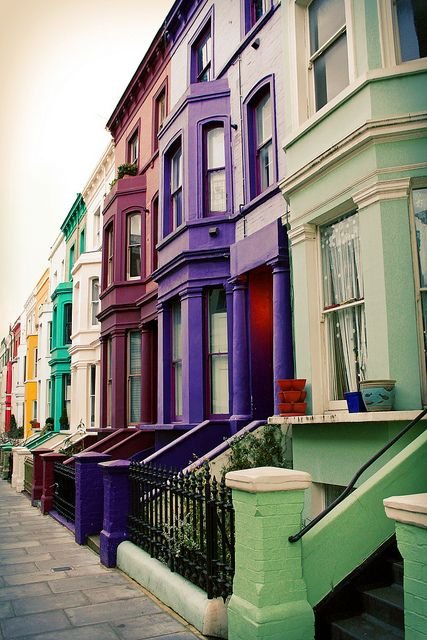
Exploring Notting Hill, London

6-Bo-Kaap, Cape Town" South Africa"
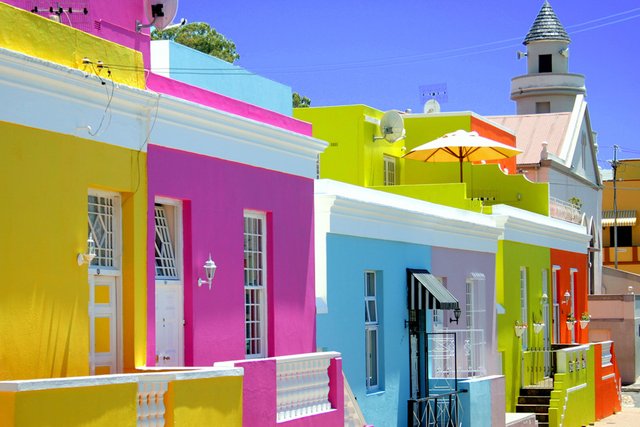
The Bo-Kaap is a district of Cape Town, South Africa, located in the City Bowl (center) its name means "Above Cape Town" in Afrikkans and refers to the neighborhood situation, which is extends on the flanks of Signal Hills Mountain. The Bo-Kaap is home to a high concentration of Cape Muslims (Cape Muslims), descendants of people from present-day Malaysia, India, and Indonesia who were deported by the East India Company to serve as labor force in the colony from the 18th century.
cape-town-bo-kaap-south africa-discovery Today, Bo-Kaap is one of the most picturesque neighborhoods in Cape Town with its cobbled streets, colorful houses and mosques. architecture recalls that of Southeast Asia.
The Bo-Kaap Museum is housed in a Cape Dutch style house dating back to 1760 and one of the peculiarities of which is its "Voorstoep", a terrace at the front of the house. The museum presents objects and photographs related to the life of the Cape Muslims during the 19th century.

Located on the slopes of Signal Hill above the city center, Bo-Kaap is one of the most fascinating residential neighborhoods of the South African city of Cape Town. The neighborhood is characterized by brightly colored houses dating back to the 18th century.
The residents of Bo-Kaap are descendants of slaves who were imported by the Dutch from Malaysia, Indonesia, India, Sri Lanka and several African countries during the 16th and 17th centuries. These slaves were called "Cape Malays", although they were not all of Malaysian descent.
The brightly colored houses on either side of the street is a recent innovation that celebrates the neighborhood's Muslim identity. At first, all Cape Town homes were painted white. Then the people of Bo-Kaap began painting their brightly colored houses in preparation for the celebration of Eid. Neighbors often agreed on which colors to use in order not to have a shock of nuances.
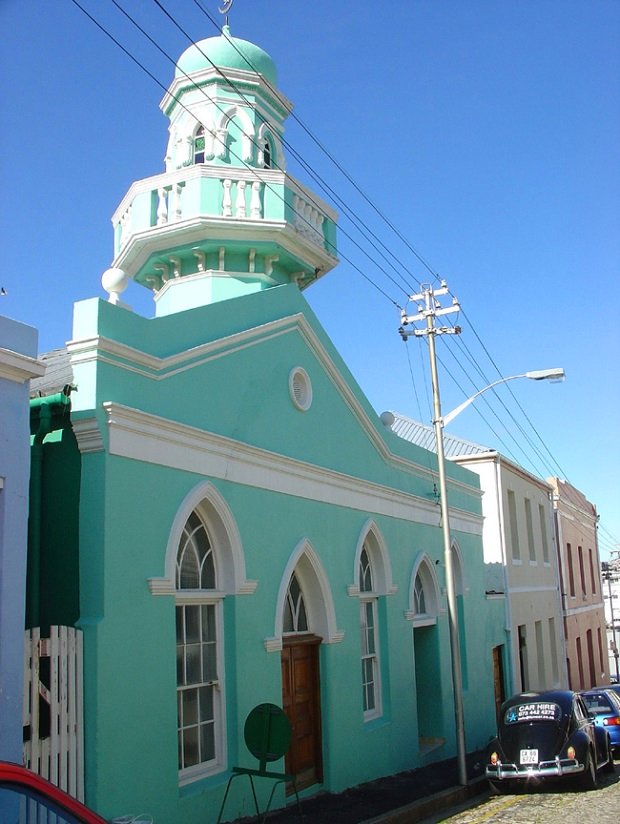
Bo Kaap Cape Town "South Africa"

7-Gamcheon, Busan "South Korea"
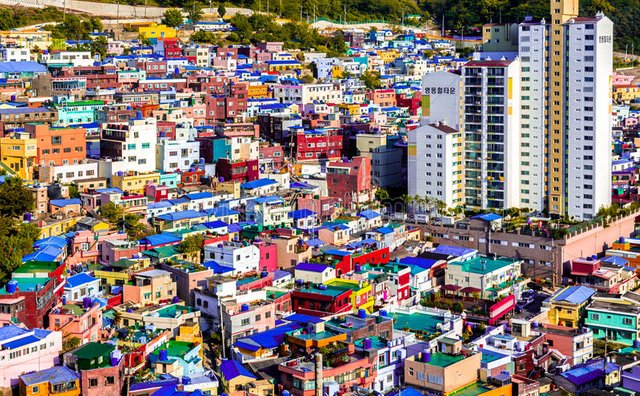
The area of Gamcheon, in the city of Busan, has many nicknames. "The village of Lego" or "the Machu Picchu Korean" reflects well the surpising landscape that offer these colored houses perched on the hill.
Gamcheon is a district to be enjoyed as it is offered to the visitor, a multicolored village-candy with its square, green, yellow or blue houses aligned in "terrace" on the heights of the port, between which one circulates by a tangle of alleys. There is a desire to distinguish itself from the surroundings, from the seductive Busan, a metropolis proud of its beaches, its Buddhist temples, its film festival and its maritime activity.
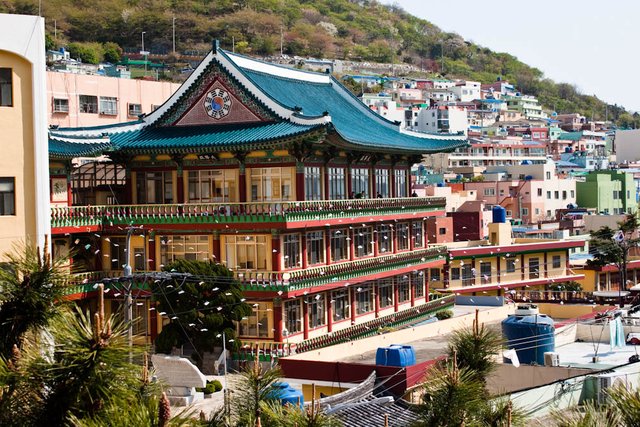
In Gamcheon, we are elsewhere, between the open-air museum and the rather poor village. We do not enter, we sneak under the teasing eye of gargoyles perched on the roofs of the first houses. Then we come up against a the trompe-eye.
The works of art installed at each corner of the alley are not by chance. In 2009, the Ministry of Culture released a budget to rehabilitate popular and neglected neighborhoods in some cities. Gamcheon was one of them and the result is amazing. Eleven local artists presented projects. The gargoyles so, the trompe-eye, and then fish-shaped signposts and even a Little Prince sitting on a hill, contemplating the village.

-Gamcheon Culture Vilage Aerial Showreel

8-La Boca, Buenos Aires" Argentina"

La Boca is a mythical district of Buenos Aires. Known by some for its traditions and its ancient culture, for others by its football club of international renown, or for its very pleasant caminito, the barrio - district - is dreaming of more than one. To respond to the influx of visitors coming to visit the Caminito every day, restaurants, bars and shops stretch all along the street.
When you think of La Boca, you immediately come to mind its colorful houses, tango dancers and its air elsewhere ... Located south of the city and first port of Buenos Aires, La Boca, it is first the influence of the waves of Italian and Spanish immigrants during the nineteenth century. The latter living in poverty have gradually built houses with the available equipment.
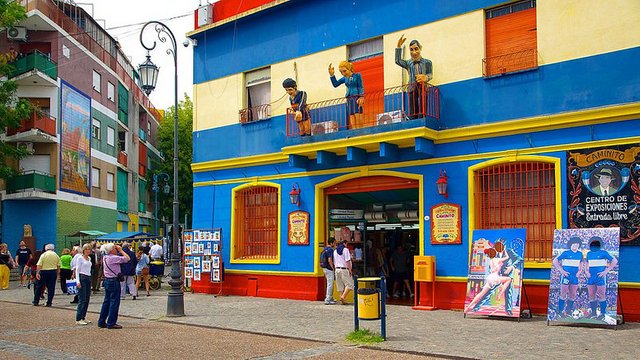
And since Buenos Aires is at the edge of the ocean, the newcomers constructed their conventillos with the remains of material initially destined to the maintenance of the port, or the boats. Where the colors of the Boca! In reality they come from the recovery of paintings intended to redo the colors of boats.
In 1950, residents of the area, under the impetus of the famous Argentine painter Benito Quinquela Martin, himself a resident of La Boca, decide to renovate this space fallen into disuse.
Today, the part called Caminito de la Boca is dedicated to tourists, hence the many restaurants, shops and bars of the street.
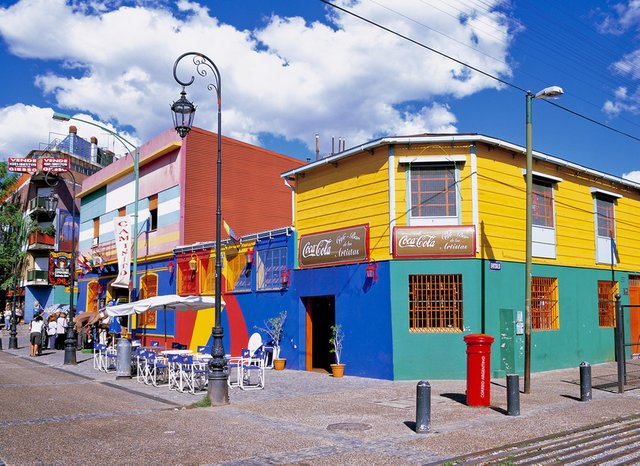
-CAMINITO ,LA BOCA, BUENOS AIRES"ARGENTINA"

9-the Palmitas, Pachuca "Mexico"
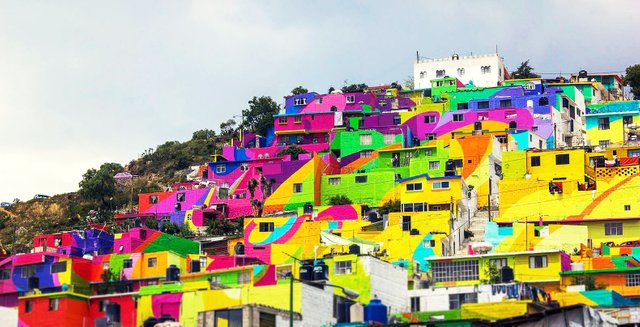
Orange, green, pink, yellow ... So many colors that illuminate the underprivileged area of Palmitas, in the city of Pachuca, Mexico. A project led by a collective of local artists, which has helped to reduce crime.
Not so long ago, Palmitas district in the city of Pachuca, about a hundred kilometers from Mexico City, had a bad reputation. One did not venture in its steep streets, on the hillside, where delinquency was high and where bands clashed to death between its decrepit walls. But today, this deprived neighborhood is in the center of attention, since a collective of Mexican artists, the Germen Crew, has realized a huge mural on all the houses with the help of its inhabitants.
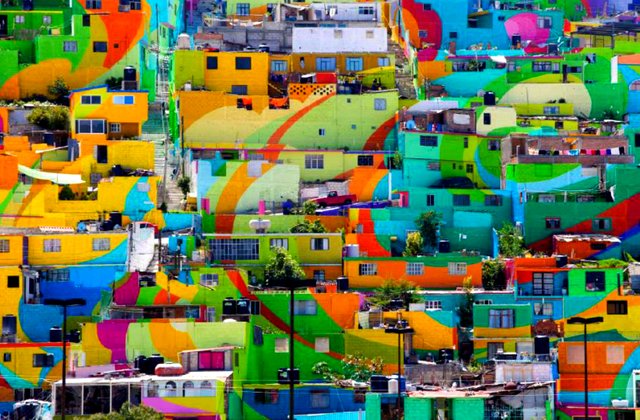
Repainted in the colors of the rainbow, the modest homes draw together an immense gay and colorful wave of 20,000 m2 that restores pride to all its population and opens new horizons. In total, 202 houses, 452 families and 1808 people were involved in the project. On the job side, the five-month project mobilized about twenty people to make "the biggest [fresco] in all of Mexico," according to the city council.
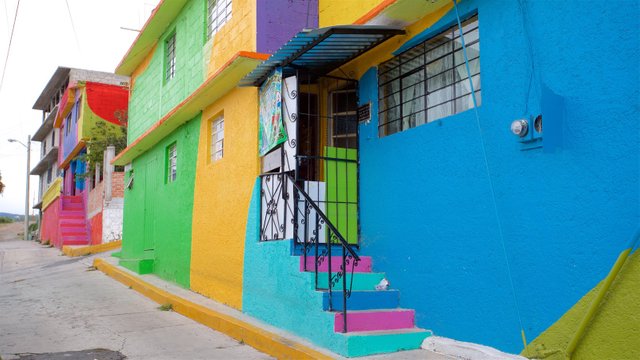
The project, by beautifying the neighborhood, has also reduced the rate of delinquency and began to change the relationship between the inhabitants, Since the completion of the fresco, no degradation was found and no wild graffiti appeared.
Street-art artists from the collective Germen Crew are now making more elaborate drawings on the walls, telling the story of the neighborhood and its people.
Evidence of the success of the operation, residents of the nearby hill came to see the artists at work to ask them if they could do the same thing in their neighborhood. An extension project would be under study.
-Palmitas - "Pachuca is painted" - Macromural

10-Reykjavik" Iceland"
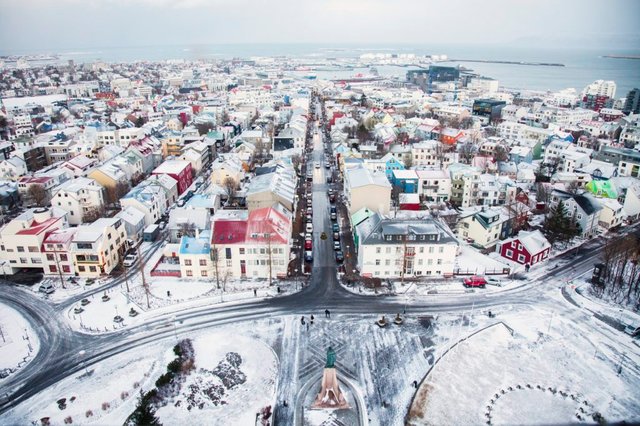
The area called Old Reykjavík is the bustling heart of the capital. Bordering the placid Tjörnin, the city's downtown lake, this colorful neighborhood is home to many interesting sites and historical monuments. It is also ideal for walks, from the waterfront to Austurvöllur Park, the Alþingi (Parliament) and Ráðhús (City Hall), and finally the National Museum.
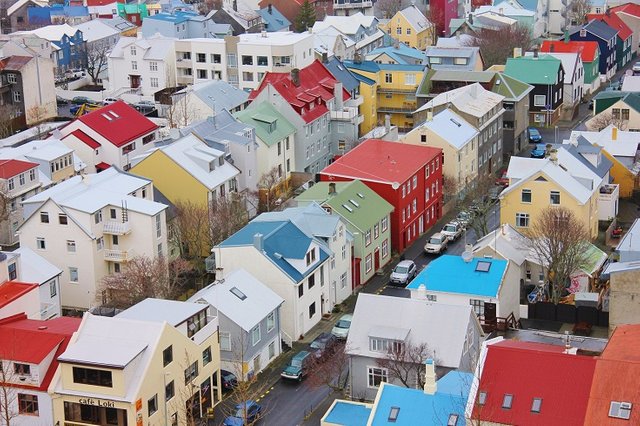
Reykjavik is the northernmost capital of the world. It is 120,000 strong for a country, Iceland, which has 325,000. In full expansion, it encroaches more and more on neighboring localities. The city center is picturesque with its small provincial town and colorful houses.
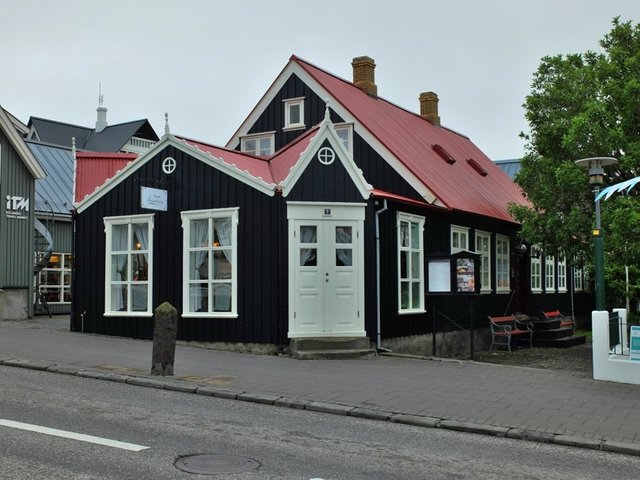
Reykjavik is a capital city in which modern architecture has found its place. The opera is a striking example with its honeycombed glass structure, which reflects the light differently depending on the exposure (and again, it must be much more impressive on a sunny day ..). The interior of the structure is also amazing, it's an opportunity to have fun doing abstract photography!
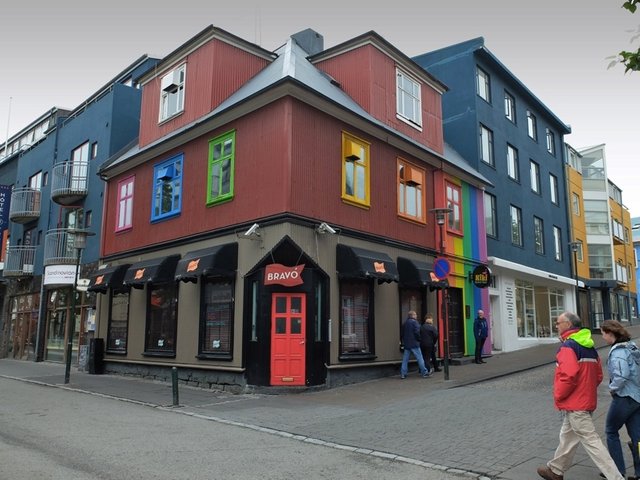
While walking in the streets of the center, we come across amazing places, such as this square where street art reigns, and this two steps from streets to bourgeois homes! This juxtaposition of small neighborhoods so different. A little further, another example of original place where wooden planks and jute bags serve as benches!
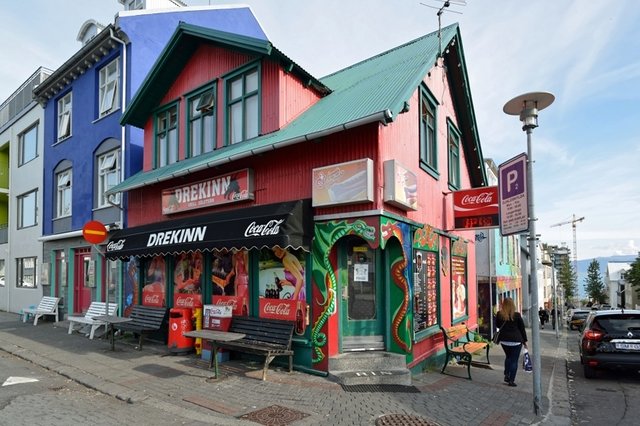

7.35% @pushup from @aek081969
awesome post!!
@aek081969
Please help me, upvote on this publication because I am participating in a contest. Please I need your help.
T hank you
https://steemit.com/collorchalange/@mustaphaaoufi/swt-ala-almnshwr-in-aajbk-votez-la-publication-si-vous-aimez-upvote-the-publication-if-you-like